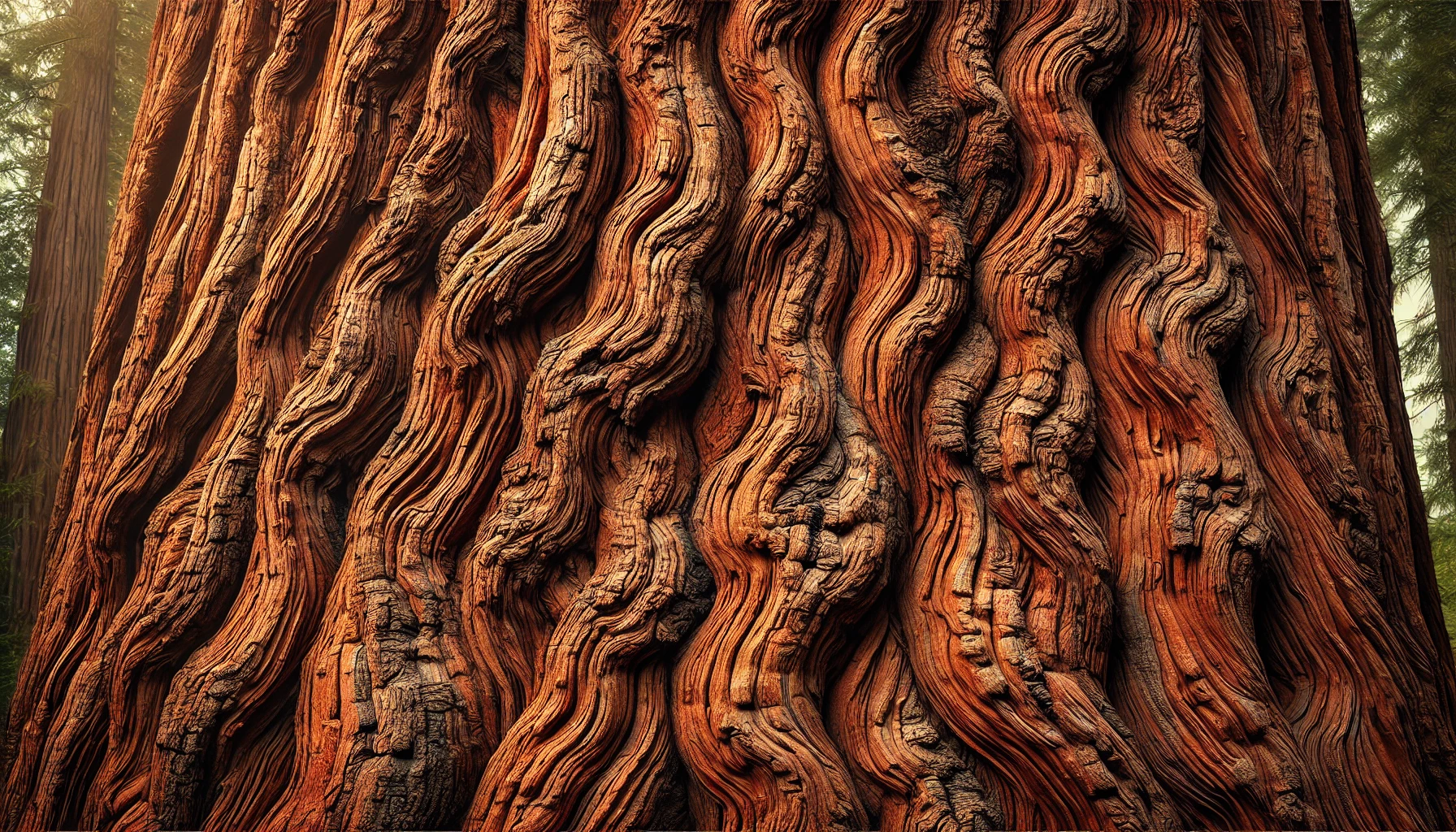
Cathedral Redwoods: Complete Guide to Planting, Care, and Conservation
Imagine standing among towering giants, their ancient trunks rising hundreds of feet into the sky. 
In this complete guide, we’ll walk you through everything you need to know about Cathedral Redwoods—from planting and care tips to conservation strategies. With the right knowledge, you can help protect these natural wonders and enjoy their beauty for years to come. Let’s dive in and explore how to make the most of your Cathedral Redwoods!
Table of Contents
ToggleWhat Are Cathedral Redwoods? 
Cathedral Redwoods, also known as Coast Redwoods (Sequoia sempervirens), are some of the tallest and most majestic trees on Earth. These towering giants can grow over 350 feet (107 meters) tall, and their dense, lush canopies often create a cathedral-like atmosphere beneath them, hence the name. Found along the foggy coasts of Northern California, Cathedral Redwoods are not only visually stunning but also incredibly resilient and vital to their ecosystem.
Key Characteristics of Cathedral Redwoods 
- Height & Size: These trees are the tallest living organisms on the planet, with some reaching over 350 feet. Their trunks can be over 20 feet wide at the base!
- Lifespan: Cathedral Redwoods can live for over 2,000 years, making them one of the longest-living species on Earth.
- Bark & Leaves: The bark of these trees is thick, reddish-brown, and fire-resistant. Their leaves are needle-like, soft to the touch, and can stay green year-round, helping them survive in diverse climates.

Where Are Cathedral Redwoods Found? 
These redwoods are native to the coastal regions of Northern California, with the majority of them growing in the Redwood National and State Parks. The cool, misty climate of this area—where fog from the Pacific Ocean helps maintain moisture—creates the perfect growing conditions for these colossal trees.
Why Are Cathedral Redwoods So Special? 
- Ecosystem Importance: Cathedral Redwoods play a key role in their ecosystems. They provide homes for countless species of birds, insects, and plants. Their roots help prevent soil erosion and maintain soil health.
- Carbon Sequestration: These trees are nature’s carbon sinks, absorbing and storing massive amounts of carbon dioxide, which helps combat climate change.
- Cultural and Historical Significance: Native American tribes have long regarded these trees as sacred. Their towering presence has inspired generations of people and has become a symbol of strength, longevity, and resilience.
Why You Should Care About Cathedral Redwoods 
Given their impressive size, long lifespan, and vital role in the environment, Cathedral Redwoods are an essential part of our natural world. Unfortunately, they face threats from logging, climate change, and habitat loss. By learning more about these remarkable trees, you can help raise awareness and support conservation efforts to protect them for future generations.
By understanding what Cathedral Redwoods are, you’ll appreciate not only their beauty but also the crucial role they play in maintaining the balance of our planet’s ecosystems.
Planting Cathedral Redwoods 
Planting Cathedral Redwoods (Sequoia sempervirens) can be a rewarding experience that allows you to nurture one of nature’s tallest and most majestic trees. Whether you’re looking to grow them in your backyard, create a small grove, or contribute to conservation efforts, proper planting is key to ensuring their long-term health and growth. Follow these simple, yet essential steps to get started!
1. Choose the Right Location 
Cathedral Redwoods need plenty of space to grow. Choose a location with the following characteristics:
- Full sunlight: While redwoods can tolerate partial shade, they thrive best with plenty of sun.
- Well-draining soil: These trees don’t like soggy feet, so make sure the soil drains well.
- Room to grow: Redwoods can grow up to 300 feet tall, so avoid planting them too close to buildings, power lines, or other trees.
2. Prepare the Soil 
Redwoods prefer rich, slightly acidic soil. If your soil is heavy clay or too alkaline, consider amending it with organic compost to improve drainage and soil quality. Here’s what to do:
- Loosen the soil with a shovel or tiller, especially if it’s compacted.
- Mix in organic matter like compost or well-rotted manure to boost nutrients.
3. Planting Your Redwood Seedling 
Once you’ve chosen the perfect spot and prepared the soil, it’s time to plant your redwood. Follow these steps:
- Dig a hole about twice the size of the root ball of your seedling. This gives the roots room to spread out.
- Place the seedling in the hole, ensuring the top of the root ball is level with the surrounding soil. If planted too deep, the roots may suffocate.
- Fill the hole with the amended soil, gently packing it around the base of the tree.
- Water thoroughly to settle the soil and eliminate air pockets. Keep the area moist, but not soggy, for the first few months.
4. Mulch and Watering 
After planting, apply a generous layer of mulch around the base of the seedling. This helps to retain moisture, suppress weeds, and regulate soil temperature. Keep these points in mind:
- Watering: Water your redwood regularly, especially during dry periods. Aim for deep, infrequent watering to encourage strong root growth.
- Mulching: Add 2-4 inches of mulch, but keep it a few inches away from the trunk to prevent rot.
5. Care in the Early Years 
Redwoods grow fast, but they need attention in their first few years to get established:
- Monitor for pests and diseases: Keep an eye out for common tree pests like aphids or fungal infections. Early intervention can prevent problems from spreading.
- Prune dead or damaged branches to encourage healthy growth, but avoid heavy pruning, as it can stress the tree.
6. Encourage Healthy Growth 
Once your redwood has settled in, it’s time to help it grow to its full potential:
- Water deeply during dry spells, especially in the summer months.
- Fertilize lightly once a year with a balanced, slow-release fertilizer.
- Thin out nearby competition by trimming any plants or trees that may overshadow your redwood.
7. Watch It Grow! 
Cathedral Redwoods grow rapidly and can add 3-6 feet in height every year during their early years. In a few decades, you’ll have a towering, awe-inspiring tree that contributes to a healthier, more vibrant environment. And remember, as they grow, their expansive root systems help prevent soil erosion and provide habitat for local wildlife.
By following these simple steps, you’ll be on your way to growing a magnificent Cathedral Redwood that will stand tall for generations to come. Happy planting!
Caring for Cathedral Redwoods 
Cathedral Redwoods, also known as Coast Redwoods (Sequoia sempervirens), are majestic trees that require specific care to thrive in your garden or landscape. These towering giants are a symbol of strength and beauty, but they can be tricky to manage if you don’t know how to meet their needs. Whether you’re planting new redwoods or caring for existing ones, here’s everything you need to know to ensure they grow strong and healthy.
1. Choosing the Right Location 
Cathedral Redwoods need ample space and the right environment to thrive. Here’s what to look for:
- Full Sun to Partial Shade: These trees love sunlight but can tolerate some shade, especially in warmer climates.
- Well-Drained, Moist Soil: Redwoods prefer slightly acidic, moist, well-drained soil. Avoid areas with standing water or overly dry soil.
- Room to Grow: These trees can grow tall and wide, so ensure there’s plenty of space for them to stretch their roots and branches.
2. Planting Tips for Success 
Planting redwoods properly ensures strong growth from the start. Here’s a step-by-step guide:
- Dig a Large Hole: The planting hole should be at least twice the size of the root ball to give the roots plenty of space to spread out.
- Prepare the Soil: Mix the native soil with organic compost to help retain moisture and improve drainage.
- Planting Depth: Make sure the top of the root ball is level with the ground. If it’s too deep or too high, it can affect root growth.
- Water Immediately: After planting, water thoroughly to help the tree settle in and reduce transplant shock.
3. Watering Your Redwood 
Redwoods need a lot of water, especially when they’re young. Keep these watering tips in mind:
- Deep Watering: Water deeply, but less frequently. This encourages deep root growth, which is vital for stability.
- Frequency: During the first year, water weekly if there’s no rain. In hot, dry periods, you may need to water more often.
- Mulch: Apply a layer of mulch around the base to help retain moisture and prevent weeds from competing with your tree.
4. Fertilizing Cathedral Redwoods 
Although redwoods don’t require heavy fertilization, feeding them occasionally will encourage healthy growth.
- Use Organic Fertilizer: Apply a balanced, slow-release fertilizer once or twice a year in the spring. Avoid fertilizers high in nitrogen, which can burn the roots.
- Signs of Nutrient Deficiency: Yellowing leaves or slow growth can indicate a lack of nutrients. If this happens, use a balanced organic fertilizer and make sure the soil pH is ideal.
5. Pruning and Maintenance 
Redwoods grow tall, but they don’t need a lot of pruning. Here’s what you should know:
- Minimal Pruning: Only prune dead or damaged branches. Avoid cutting back live wood unless absolutely necessary.
- Remove Weeds: Keep the area around the tree free from weeds that may compete for nutrients and moisture.
- Regular Monitoring: Check for pests or diseases, though redwoods are generally resistant. Early detection can prevent bigger issues.
6. Dealing with Common Issues 
While Cathedral Redwoods are hardy, they may still face a few challenges:
- Root Rot: Make sure your tree’s roots aren’t waterlogged. Good drainage is essential for preventing root rot.
- Pests: While redwoods are mostly pest-resistant, look out for aphids, scale insects, or fungal infections, especially in stressed trees.
- Drought Stress: If your tree starts to look wilted or yellow during hot weather, it may need more water or protection from the heat.
7. Winter Care 
In colder climates, you may need to protect your redwoods during winter:
- Mulch Around the Base: This will help insulate the roots from freezing temperatures.
- Watering: Continue watering during winter if the soil is dry, but be mindful of not overwatering during the wet season.
8. Long-Term Care for Thriving Trees 
Cathedral Redwoods can live for centuries and grow into magnificent giants, but they require long-term care:
- Patience: These trees grow slowly, especially when young. Give them time to establish strong roots and a healthy trunk.
- Protect from Damage: As they grow taller, be mindful of wind and potential damage from heavy storms. Young redwoods may need staking until their roots are well-established.
By following these straightforward care tips, your Cathedral Redwoods will not only survive but thrive for generations to come. Whether you’re planting them for a stunning landscape feature or conserving them as part of a larger forest restoration project, these incredible trees will reward your efforts with beauty and grandeur.
Common Issues with Cathedral Redwoods and How to Solve Them
Cathedral Redwoods (Sequoia sempervirens) are majestic trees that can thrive for centuries with proper care, but they’re not without their challenges. If you’re growing these towering beauties, it’s important to stay ahead of common issues that could hinder their growth or health. Below are some of the most frequent problems with Cathedral Redwoods and practical solutions to help you tackle them.
1. Poor Soil Drainage 
Problem: Cathedral Redwoods require well-drained, slightly acidic soil to thrive. Poor soil drainage can lead to waterlogged roots, which makes the tree vulnerable to root rot and other diseases.
Solution:
- Improve Soil Drainage: If your soil is heavy or clayey, amend it by adding organic matter like compost or well-rotted manure. You can also mix in sand or perlite to improve drainage.
- Raised Beds: Consider planting your redwood in a raised bed or mound to encourage water to drain away from the roots.
- Avoid Overwatering: Ensure the tree receives consistent moisture, but don’t let the soil stay soggy for too long.
2. Yellowing Leaves 
Problem: Yellowing leaves can be a sign of nutrient deficiencies, overwatering, or pest damage.
Solution:
- Nutrient Deficiency: If the yellowing is uniform, the tree may need more nitrogen, iron, or magnesium. A balanced fertilizer or a slow-release nitrogen fertilizer can help.
- Watering Habits: Ensure you’re watering at the right time and not overwatering. Check soil moisture before watering and make adjustments based on seasonal needs.
- Check for Pests: Sometimes, pests like aphids or scale insects can cause yellowing. Inspect the tree for any signs of infestations and treat with organic pest control options like neem oil if needed.
3. Pests and Diseases 
Problem: Although Cathedral Redwoods are generally resistant to pests, they can still fall prey to insects, fungi, and other diseases, especially in poorly maintained environments.
Solution:
- Preventive Care: Keep your tree healthy by ensuring it has proper watering, sufficient sunlight, and adequate spacing for airflow. Healthy trees are less likely to be attacked by pests.
- Pruning and Cleaning: Regularly prune dead or diseased branches and clean up fallen debris to reduce the risk of fungal infections.
- Natural Pest Control: Use organic treatments like neem oil, insecticidal soap, or beneficial insects (such as ladybugs) to manage pest issues.
4. Excessive Pruning 
Problem: Pruning is necessary for maintaining a healthy structure, but excessive pruning can stress the tree and stunt its growth. Cutting too much can also open the tree to infections.
Solution:
- Minimal Pruning: Only remove dead, damaged, or diseased wood. Avoid cutting into the canopy unless absolutely necessary.
- Right Timing: Prune during the tree’s dormant season (late fall to early winter) to minimize stress and ensure proper healing.
- Proper Techniques: Use sharp, clean tools to make smooth cuts and avoid tearing the bark.
5. Slow Growth or Stunted Development 
Problem: Cathedral Redwoods are known for their rapid growth, but if they’re not growing as expected, it could be due to poor environmental conditions or lack of nutrients.
Solution:
- Check Light and Space: Ensure the tree is getting full sunlight (at least 6 hours a day) and isn’t shaded by larger plants or structures. They also need plenty of space for their roots to spread out.
- Soil Quality: Conduct a soil test to check for any nutrient imbalances. Add the right fertilizers based on the results to promote healthy growth.
- Regular Watering: Make sure the tree gets enough water, especially during dry spells. However, be cautious not to overwater, as discussed earlier.
6. Winter Damage 
Problem: Cathedral Redwoods are generally hardy, but extreme cold or freezing temperatures can cause damage, especially if the tree is young or newly planted.
Solution:
- Mulch Around the Base: Apply a thick layer of mulch around the base of the tree to help protect the roots from freezing temperatures.
- Watering Before Winter: Ensure the tree is well-watered before the first frost, as trees can struggle if they’re stressed from drought during the winter months.
- Provide Shelter: In areas with harsh winters, consider temporarily wrapping the tree in burlap or creating a windbreak to protect it from the elements.
7. Root Competition 
Problem: Redwood trees can struggle if their roots are competing with nearby plants for nutrients and water. This is especially true if you have other large plants or trees nearby.
Solution:
- Space Out Plants: Ensure there is adequate space around your Cathedral Redwood to prevent root competition. Ideally, plant them away from other large trees or shrubs.
- Regular Feeding: Fertilize regularly with a balanced, slow-release fertilizer to ensure the redwood gets the nutrients it needs without having to compete.
Conclusion 
Caring for Cathedral Redwoods doesn’t need to be overwhelming, but it does require attention to their specific needs. By addressing common issues like poor drainage, pests, and slow growth early on, you can help these majestic trees thrive for years to come. Keep an eye on your redwood’s environment, and always look for the root cause of any problem you encounter. Happy growing!
Benefits of Cathedral Redwoods 
Cathedral Redwoods are not just awe-inspiring trees; they offer a range of benefits that can enhance your landscape, boost the environment, and provide a unique natural experience. Here’s why you should consider planting Cathedral Redwoods:
1. Impressive Aesthetic Appeal 
The towering beauty of Cathedral Redwoods adds an extraordinary touch to any landscape. With their lush, deep-green foliage and majestic height, these trees create a striking visual statement. Whether you’re looking to beautify your garden or create a serene atmosphere, the Cathedral Redwoods’ elegant structure is sure to captivate the eyes of all who pass by. The dappled sunlight filtering through the canopy creates a peaceful, magical vibe that’s perfect for relaxation.
2. Environmental Benefits 
Cathedral Redwoods play an essential role in improving the environment. As fast-growing trees, they absorb significant amounts of carbon dioxide, helping reduce the greenhouse gases that contribute to climate change. 

3. Energy Efficiency 
If you live in a region with hot summers, Cathedral Redwoods can act as a natural shade solution. Their dense canopy provides cooling shade, reducing the need for air conditioning and lowering energy bills. By strategically planting them around your home or garden, you can reduce the urban heat island effect and make your space more energy-efficient.
4. Low Maintenance 
Once established, Cathedral Redwoods are relatively low maintenance. They require minimal care in terms of watering, especially once their roots are deeply anchored. They thrive in a wide range of soil types and weather conditions, making them perfect for both beginners and experienced gardeners. With their natural resistance to pests and diseases, Cathedral Redwoods are an excellent choice for anyone looking for a hardy, low-maintenance tree.
5. Soil Erosion Control 
Thanks to their deep root system, Cathedral Redwoods help prevent soil erosion. Whether you’re dealing with a sloped area or live in an area prone to heavy rains, these trees stabilize the soil, preventing landslides and promoting healthier ground conditions. This makes them a smart choice for land conservation and protection of the surrounding environment.
6. Long-Lasting Legacy 
Cathedral Redwoods can live for centuries, offering long-term benefits that extend well beyond your lifetime. Their longevity ensures that your investment will continue to grow and thrive, becoming a natural heritage for future generations to enjoy. Not only do they provide beauty and shade, but they also become a lasting symbol of environmental stewardship and care.
7. Wildlife Habitat 
These majestic trees are home to a variety of wildlife. Birds, squirrels, and even small mammals find shelter in their branches, while their dense foliage creates a safe haven for insects and other critters. If you enjoy wildlife watching, planting Cathedral Redwoods in your garden can attract a rich diversity of species, turning your outdoor space into a thriving wildlife sanctuary.
8. Improved Property Value 
The aesthetic appeal, environmental benefits, and low-maintenance nature of Cathedral Redwoods can increase the value of your property. A well-planted landscape with mature, healthy trees is a sought-after feature for homebuyers. The presence of Cathedral Redwoods could make your property more attractive in the real estate market, offering both beauty and functionality.
9. Therapeutic Benefits 
Spending time in the presence of Cathedral Redwoods has been shown to provide mental health benefits. The calming environment created by these majestic trees can help reduce stress, improve focus, and promote overall well-being. Whether you meditate, read, or simply enjoy the peace of nature, Cathedral Redwoods provide a therapeutic environment that nourishes the soul.
Planting Cathedral Redwoods is an investment that pays off in numerous ways—environmentally, aesthetically, and even financially. From their beauty and wildlife benefits to their air-purifying qualities, these trees are an excellent choice for anyone looking to enhance their space while contributing to a healthier planet 
Conservation of Cathedral Redwoods 
Cathedral Redwoods are majestic trees that require special attention to ensure their survival. Due to their size and age, these trees face several environmental threats, making their conservation crucial. Whether you’re a nature enthusiast or someone who has planted Cathedral Redwoods, understanding how to protect them can make a world of difference. Here’s a practical guide on how we can help conserve these incredible giants.
1. Protecting Their Natural Habitat 
One of the most important steps in Cathedral Redwood conservation is safeguarding their natural environment. These trees thrive in moist, temperate coastal climates, especially along California’s coast. Unfortunately, urbanization, logging, and climate change threaten these areas.
- Support Local Conservation Efforts: Many organizations are working to preserve the forests where Cathedral Redwoods grow. Get involved with groups like the Save the Redwoods League, or donate to projects that protect old-growth forests.
- Advocate for Preservation: Share the importance of these forests with your community and encourage local government action to prevent overdevelopment and logging in critical areas.
2. Mitigating the Effects of Climate Change 
Climate change poses a significant threat to the Cathedral Redwoods by altering rainfall patterns, increasing temperatures, and even introducing pests and diseases. Redwoods require cool, foggy conditions to thrive, and without this, they become more vulnerable to stress.
- Reduce Carbon Footprint: Actively reduce your carbon emissions by adopting sustainable habits like using public transport, reducing waste, and supporting renewable energy initiatives.
- Support Forest Restoration Projects: Planting native trees and restoring disturbed ecosystems can help mitigate climate change impacts. Look for programs that focus on reforestation and habitat restoration.
3. Preventing Wildfires 
Wildfires are a natural part of many forest ecosystems, but human activity and climate change have increased their frequency and intensity, making them a growing concern for redwoods. Although mature redwoods can survive fires, they are still vulnerable to damage, especially when fires are too intense or frequent.
- Fire-Resistant Landscaping: If you live in an area near Cathedral Redwoods, create defensible space around your property. Use fire-resistant plants and materials, and ensure there are clear zones between trees and structures.
- Report Illegal Fires and Activities: Keep an eye out for suspicious activities near redwood forests and report illegal burning or fire hazards to authorities.
4. Educating the Public 
Awareness is key to ensuring the long-term protection of Cathedral Redwoods. By educating others about the importance of these trees, you can help rally support for their conservation.
- Get Involved in Education Programs: Whether it’s leading a nature walk or hosting a talk, educating others about redwoods can have a lasting impact. The more people understand their value, the more likely they are to support conservation efforts.
- Support Sustainable Tourism: If you’re visiting redwood parks, make sure to follow the Leave No Trace principles. This includes staying on marked trails, not disturbing wildlife, and packing out all trash.
5. Sustainable Tree Planting 
If you’re planting Cathedral Redwoods in your own backyard or community, make sure you’re doing so sustainably. These trees need specific care to grow properly and become part of the ecosystem.
- Choose the Right Location: Redwoods need ample space to grow. Select a spot that provides enough sunlight, moisture, and space for the tree to thrive.
- Use Native Plants: Surround your redwoods with native plants that support the local ecosystem. This helps provide a healthier environment for the tree and promotes biodiversity.
Conclusion
Conserving Cathedral Redwoods is not just about protecting a tree; it’s about preserving an entire ecosystem. By supporting conservation efforts, reducing your carbon footprint, preventing wildfires, and spreading awareness, you can play a part in ensuring that these majestic giants continue to thrive for generations to come. Together, we can protect the legacy of the Cathedral Redwoods 
Conclusion
The Cathedral Redwood is not just a tree; it’s a living monument that brings beauty, environmental benefits, and awe to any landscape. Whether you’re looking to plant one in your yard or contribute to their conservation, these towering giants offer a unique connection to nature’s grandeur.

By following the planting, care, and maintenance tips provided, you can ensure that your Cathedral Redwood thrives, offering lasting beauty and shade for generations to come. Additionally, supporting conservation efforts will help protect these magnificent trees, ensuring they continue to thrive in their natural habitats.
Take the first step today—plant your Cathedral Redwood and be a part of preserving one of nature’s greatest wonders!
Frequently Asked Questions(FAQ)
What are Cathedral Redwoods?
Cathedral Redwoods are a species of redwood tree (Sequoia sempervirens) known for their towering height and unique, majestic appearance. These trees can grow over 300 feet tall in their natural habitat, making them among the tallest living organisms on Earth. They are often found in coastal regions and are prized for their beauty and ecological value.
How fast do Cathedral Redwoods grow?
Cathedral Redwoods grow at a moderate rate, typically adding 1-2 feet per year during their early years. In ideal conditions, they can reach impressive heights within just a few decades, though it may take centuries to reach their full potential height of 300+ feet in the wild.
Can I plant a Cathedral Redwood in my yard?
While you can plant a Cathedral Redwood in your yard, it’s important to consider space. These trees require a lot of room for their large root systems and expansive canopies. If you have a smaller space, consider a dwarf or smaller variety instead, as full-sized Cathedral Redwoods may not be suitable for most residential landscapes.
What type of soil is best for Cathedral Redwoods?
Cathedral Redwoods prefer well-drained, slightly acidic to neutral soil. They thrive in soils that retain moisture but don’t become waterlogged. Ensure the planting area has good drainage to prevent root rot, which can occur in overly saturated soil.
When is the best time to plant a Cathedral Redwood?
The best time to plant Cathedral Redwoods is in early spring or fall when temperatures are moderate. Planting during these seasons allows the tree to establish its roots before the heat of summer or the cold of winter.
How do I care for a Cathedral Redwood tree?
Caring for a Cathedral Redwood involves regular watering, especially in dry periods. It’s also important to mulch around the base to retain moisture and suppress weeds. Fertilize in early spring with a slow-release fertilizer, and prune only to remove dead or damaged branches. Ensure proper soil drainage and avoid overwatering.
What are the most common problems with Cathedral Redwoods?
Common problems with Cathedral Redwoods include yellowing leaves (often caused by overwatering or poor drainage), pest infestations like scale insects, and root rot in waterlogged soils. Regular inspection for pests and proper watering practices can help prevent these issues.
How can I help conserve Cathedral Redwoods?
Conserving Cathedral Redwoods involves supporting preservation efforts to protect these ancient trees from deforestation and climate change. Avoid purchasing products made from redwood trees, support conservation organizations, and advocate for the protection of redwood forests. You can also plant redwoods in your own yard to help maintain their legacy.



